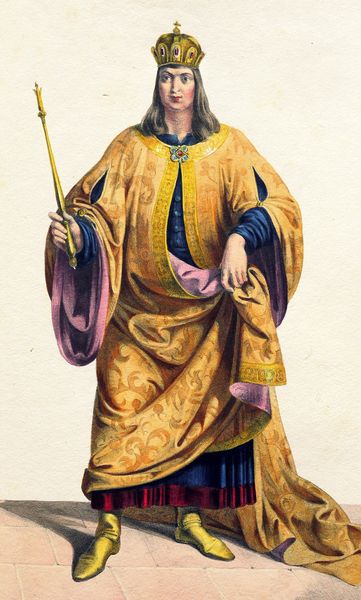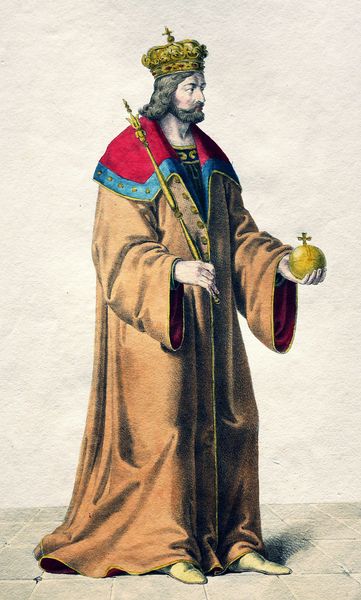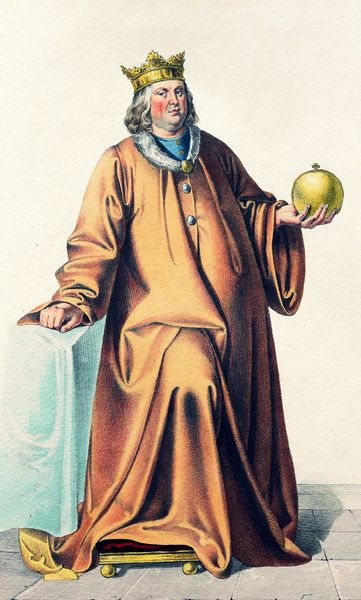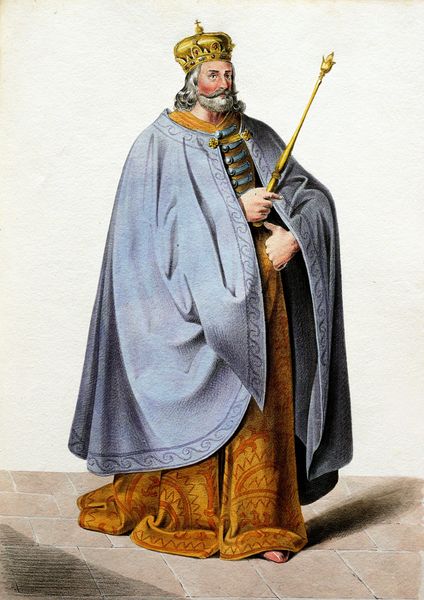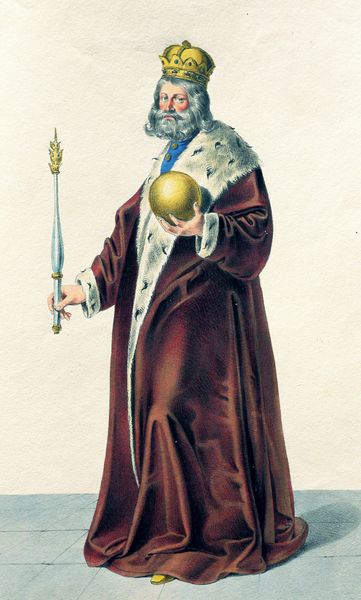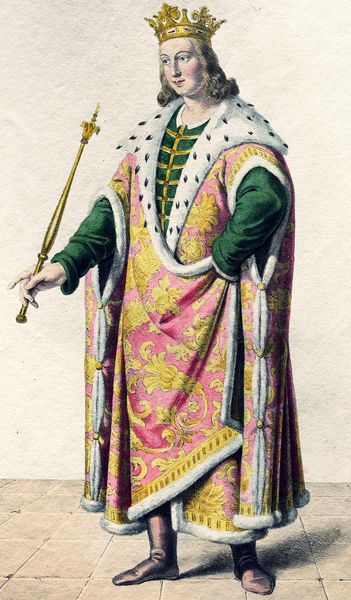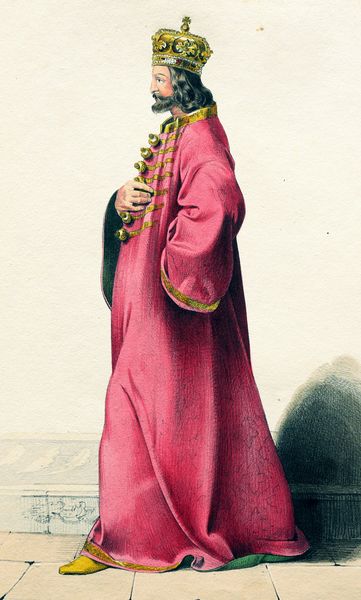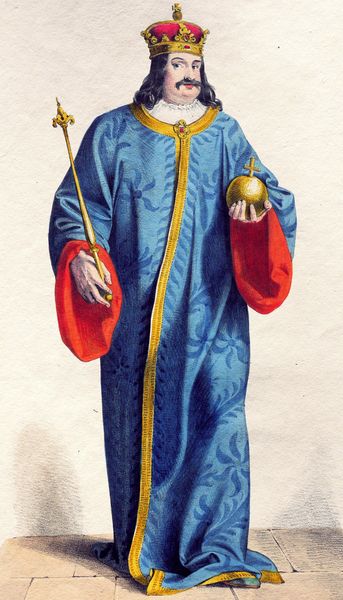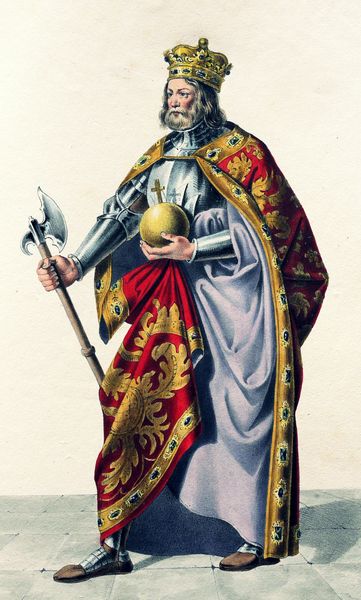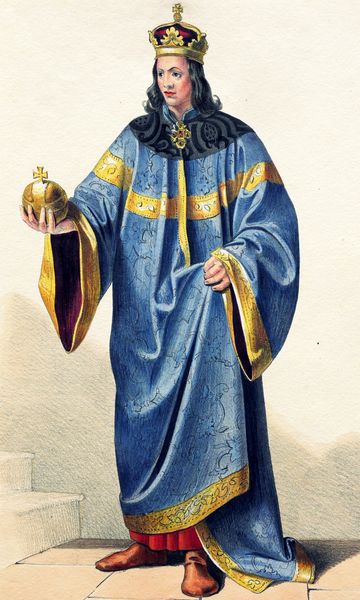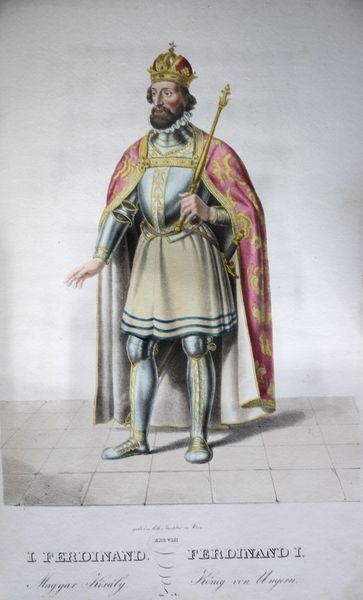
painting, graphite
#
portrait
#
character portrait
#
painting
#
romanticism
#
graphite
#
portrait drawing
#
history-painting
#
facial portrait
#
portrait art
#
fine art portrait
Copyright: Public domain
This is Josef Kriehuber’s depiction of Stephan II, rendered with lithography, a printmaking technique that gained popularity in the 19th century for its efficiency. The process begins with a smooth stone, traditionally limestone, upon which the artist draws using a greasy crayon or ink. The stone is then treated with chemicals, allowing ink to adhere only to the drawn areas. The image is printed by pressing paper against the inked stone. Notice the subtle tonal variations in the king’s robes and the meticulous detail in his crown and regalia, achieved through the skilled application of this printing process. Lithography democratized image production, making art more accessible. Kriehuber's choice of this method reflects a shift towards mass production and consumption, mirroring the rise of industrial capitalism. By embracing lithography, Kriehuber was not just creating an image of royalty, but also participating in a broader transformation of art’s role in society.
Comments
No comments
Be the first to comment and join the conversation on the ultimate creative platform.

